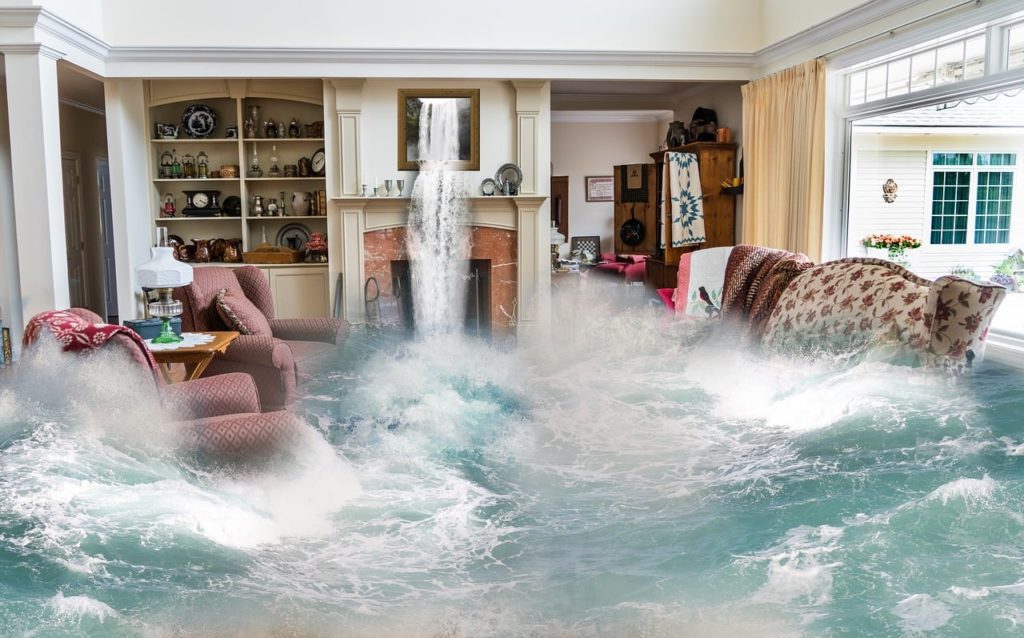Reports of extreme weather conditions and natural disasters are on the rise. Just this summer (April 2018 – present) we’ve seen over 2,000 wildfires in BC which have burned over 1 million hectares of land. Aside from fires, BC is constantly on the red alert for flooding and storms too. What havoc can be wreaked upon your property? Here are a few tips to help keep you, your family, and your property safe despite unforeseen events.
Be Aware and Get Prepared for Common BC Natural Disasters
Fire
 Risks – There are many risks when it comes to wildfires; many of which we have seen clearly this past summer. There are the obvious risks including air quality, loss of property, and even loss of life, but the list does not stop there.
Risks – There are many risks when it comes to wildfires; many of which we have seen clearly this past summer. There are the obvious risks including air quality, loss of property, and even loss of life, but the list does not stop there.
Once the inferno is extinguished, the battle is not over. We’re left with the after effects including erosion, landslides due to loss of vegetation, and potentially tainted water due to debris.
Prevention – Nearly half of all wildfires in BC are caused by human carelessness. Here are 4 ways you can help prevent fires in your area:
- Comply with fire bans and restrictions
- Camp responsibly
- The Government of BC states that campfires should never be more than 1.5 ft by 1.5 feet. They also recommend keeping a shovel or at least 8 liters of water nearby to extinguish your fire, and to create a firebreak. You will also want to ensure your campfire is completely out and the ashes cool to touch before leaving your campsite.
- Report it! If you spot smoke, flames or an unattended campfire don’t hesitate to call 1-800-663-5555 even if you think someone else has reported it.
- Learn more about wildfire prevention: How Can You Help Prevent Forest Fires?
Prepare – The first step to preparing for a wildfire, or really any natural disaster, is to organize an emergency kit. Your basic emergency kit should contain: *
- Water – 2L per person per day
- Food – canned food, energy bars, and other non-perishable items
- Can opener
- Flashlight – with extra batteries
- Radio – with extra batteries
- First aid kit
- Extra keys
- Cash
- Personal documents
- Emergency plan
*see the complete list from the Department of Public Safety
If you live in an area that is at risk for wildfires you should also regularly perform fire drills with your household. It is also important to have a thorough emergency plan prepared so your family can contact each other in case of separation in an evacuation. You should also have a functioning fire extinguisher in a designated place in your home and be sure that all members know how to use it.
Now that your household is prepared you also want to prepare your home. Preparing your home for a wildfire can reduce possible exposure to flames. Here are 5 steps you can take to prepare your home:
- Create a 30-100 ft safety zone around your home that is clear of leaves, twigs, and other flammable materials
- Mow grass regularly
- Place a nonflammable screen over your BBQ
- Follow local burning restrictions and regulations
- Review your insurance policy and also prepare a current list of your home’s contents
What to do after – The end of a blazing wildfire is not the end of danger. Before you head back to your home, you’ll need to make sure it’s safe to return. You will need to be cautious as flare ups can occur, so continue to check local news for problem areas for several days.
Storms and Flooding
Risks – Flooding is the most frequently occurring natural hazard in BC. The most severe floods tend to occur in spring, fall, and winter due to heavy rain and snowmelt. The main risk of flooding is the damage to property and the increased chance of injuries. Additionally, flood waters can be damaging to your health.
Prevention – How can you minimize the impact on your home of flooding from storms? The primary reason for flooding in the home due to a storm is poor drainage. Prevent this by regularly clearing leaves and debris from your gutter and drainage downspouts. It’s also good practice to have a professional inspect your roof regularly for missing shingles or other roof problems.
Prepare – The most important preparation you can make is to be educated about why flooding occurs. Knowing why it occurs and how it will affect you and your household will enable you to take realistic actions in the event of a flood. The next step is to create an emergency kit, and emergency plan. If a flood does occur you may need to build a sandbag blockade to protect your property from the water. The Government of BC has an instructive PDF guide as well as a video with tips to build a sandbag barricade.
What to do after – Restoring your home after a flood must be a top concern so as to prevent further damage and to protect your health. Review this flood recovery guide from the Government of BC.
No matter how much you prepare there will always be a risk of the unexpected. That’s why having the right insurance coverage is so important. Contact a qualified insurance broker today to help you be fully prepared.
For more information on being prepared in BC check out PreparedBC: Household Preparedness Guide.
